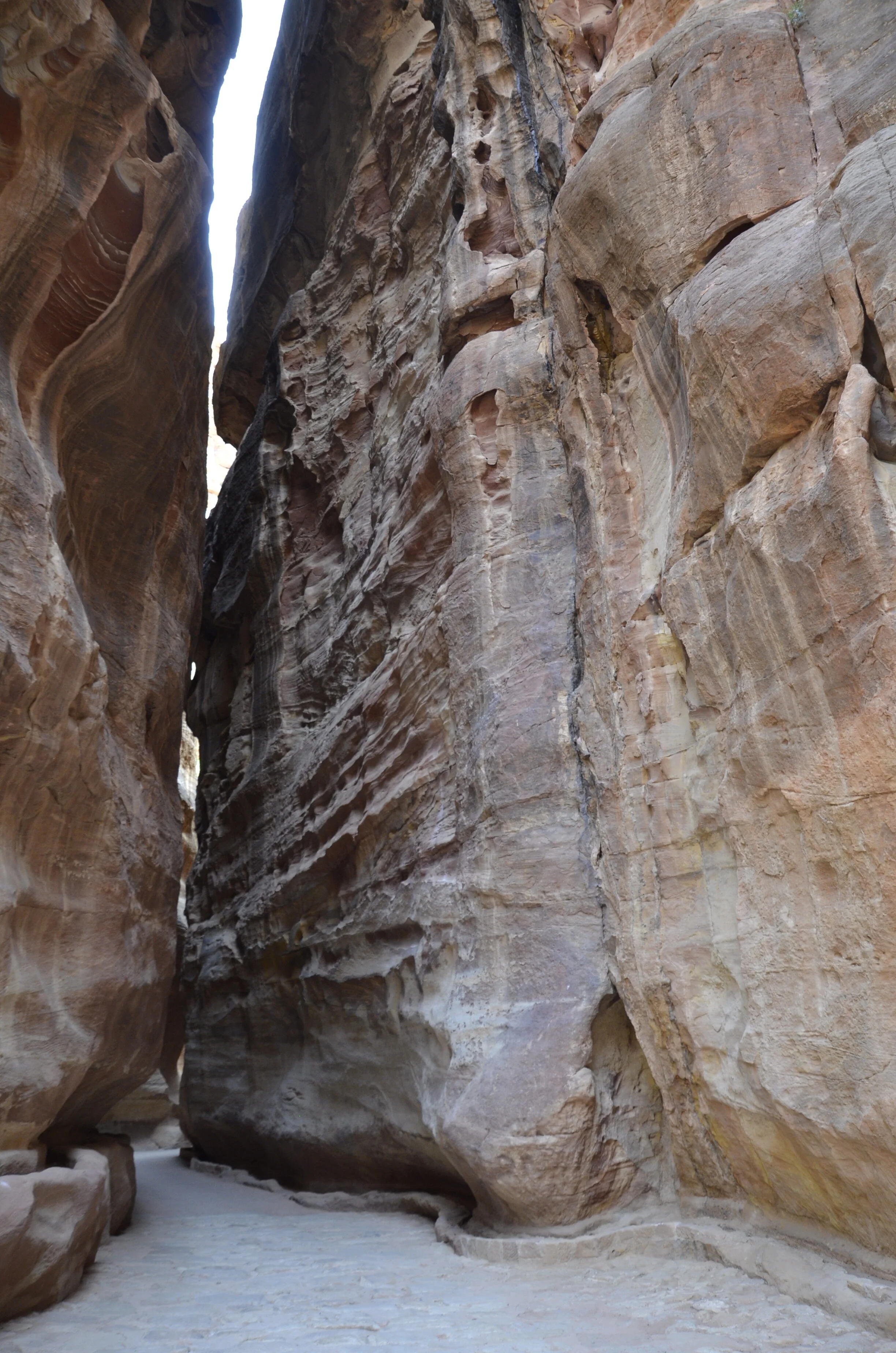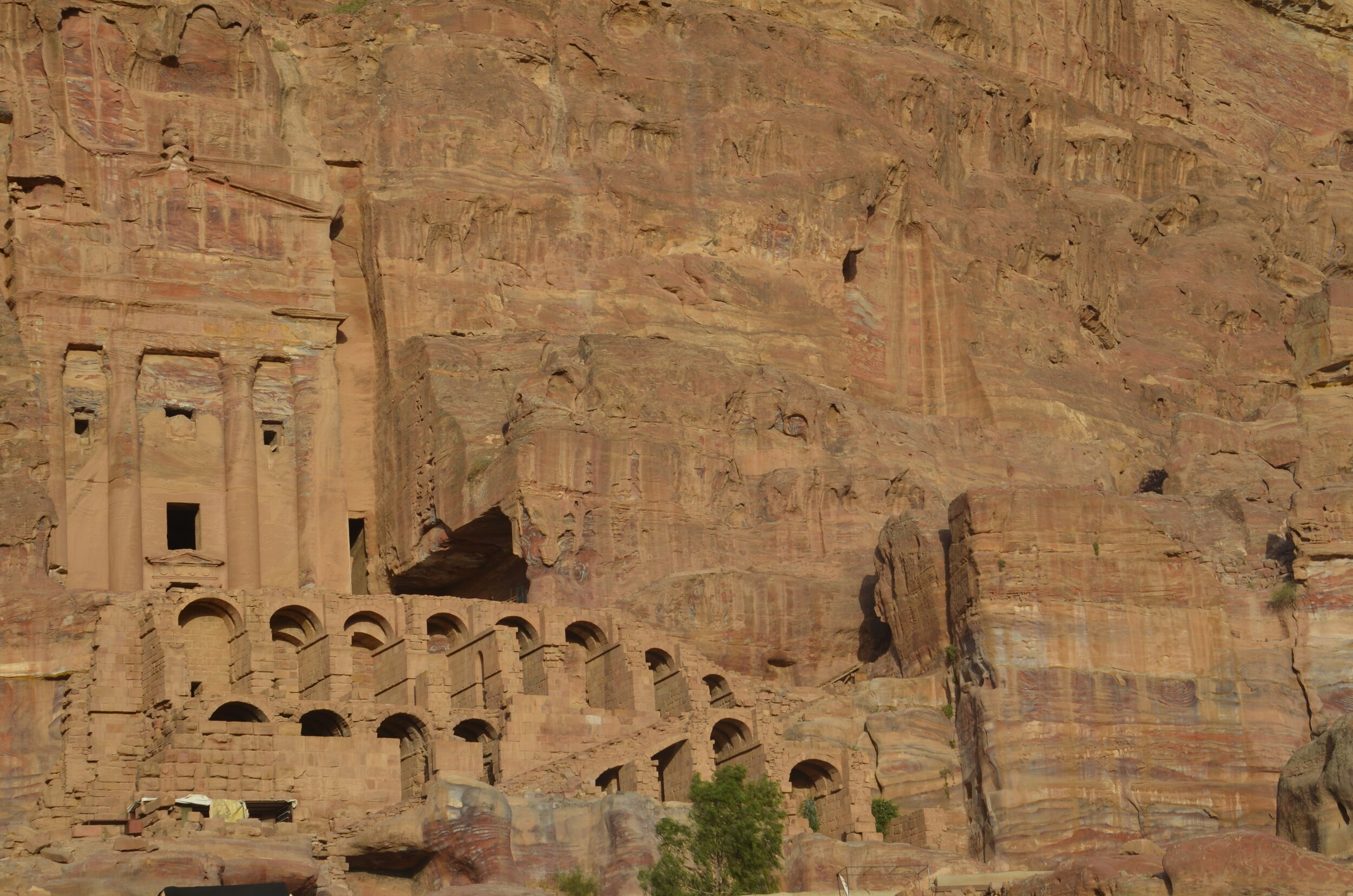Petra
Having a UNESCO World Heritage site to yourself is a traveler’s dream, and one that we were very pleased to receive. We arrived in the modern city of Petra around noon, and were scheduled to have a guide for the next day. We did some quick research and decided to try making it to the Monastery and back before the entrance closed at 7 pm. The afternoon light was supposed to be optimal for that site. The confounding factor was that it was 6+ km to get there, including 800 steps at the end. We were some of the last tourists (we’re guessing) to enter the gates at 3:30 pm. [you definitely should open this post in a separate tab to be able to appreciate the colors]
You enter the ancient city of Petra by walking through the Siq, which is a 1 km long slot canyon. The wind and water carvings in the rocks looked like laser etching sometimes -
The Indiana Jones moment…
The Bedouins leave their camels for the photo op.
We didn’t tarry at this site, as we had “miles to go…” before we could rest. It felt like heresy to fly past this, but we knew we’d be able to spend as much time as we wanted tomorrow. (that photo has not been retouched at all - the sandstone was really that pink)
I was mesmerized by the multicolored layers in the rocks of the Royal Tombs. I had never read anything hinting about how gorgeous they were.
The Colonnaded Street looking back at the Royal Tombs:
Ok, some history… Petra was once a thriving trading center and the capital of the Nabatean empire between 400 BC and 106 AD, before it was swallowed up by the Roman Empire.
Now on with our story… :) In the next picture you can see the women on the stairs in the bottom right, and the men on donkeys. We were pestered constantly as we trudged on, to accept a donkey ride, including up the 800 steps.
The vivid colors in the surrounding rocks kept me climbing…
This was my favorite shot of the Monastery. We were never sure how much farther we had to go, and kept turning corners, until…
Steve for scale, yet again -
All of these monuments were carved (not built) as tombs, and only given their names due to legends or stories.
We allotted ourselves only 5-10 minutes at the Monastery, in order to make it back to the front gates by closing time. We actually didn’t know if they would lock the gates or if they knew who might still be in the site near sundown.
The colors were even more vivid on our back out…
…and I couldn’t stop taking pictures.
The constructed (not carved) arches in the picture above are the remains of a Roman prison. There is also a glimpse in the lower left corner of the ratty souvenir stalls that the “Bedouins” are allowed to have at the site. The guide we had on our second day said that the people populating the site and the surrounding hills aren’t truly the nomadic Bedouins, but squatters/gypsies who appropriated the name to use in bargaining with the Jordanian government to remain in the area (and pester the tourists by selling junk).
As we were leaving the Treasury for the day, I got some fantastic shots of the detail in the carving:
The depth of the facade was pretty amazing -
For the last hour of our time in Petra, we were literally the only ones there (barring a very few vendors). Even the camels were gone at the Treasury. So, I’ll close with my hand held video (please forgive the lack of smoothness) of our version of discovering the Lost City.
You’ve probably already figured out that we weren’t locked in for the night. We passed through the entrance gates at 7:02 pm.

















